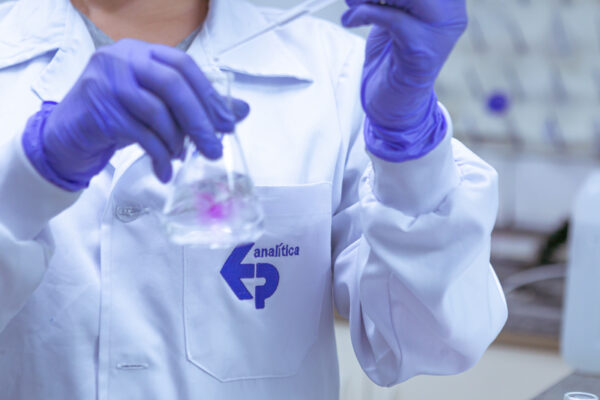What has changed in Ordinance 888 of 2021 and Annex XX of Consolidation Ordinance No. 5 of 2017
Ordinance GM/MS No. 888 of May 4, 2021 was published on May 7, 2021, but contained a number of inconsistencies, so it was republished on May 24, 2021. It is important to talk about dates because some parameters will take 12 to 24 months to be implemented from the date of publication. We have to understand that Annex XX has not been repealed, it has been rewritten. Remember that Annex XX refers to the old Ordinance 2914 of 2011, which dealt with water potability standards. This ordinance was fully incorporated as Annex XX of Consolidation Ordinance No. 5 of 2017 and now, Ordinance 888 amends the text of Annex XX. Not everything has changed, but this ordinance has brought major changes. In general, legislation goes through updates, alterations, or even revocations in an attempt to make it clearer or more objective.
Among the main changes in the ordinance are the exclusion and inclusion of parameters and the alteration of some limits, directly impacting both the customers who need to monitor the quality of the water and the laboratory providing the analysis service. An example of these impacts is in the chapter VIII, final and transitory provisions, where the art. 55 that deals with the time to adapt to the Hardness VMP, which went from 500 mg/L to 300 mg/L, will have 24 months to be reached. Another example that should draw our attention is with regard to Annex IX, which deals with substances that pose a health hazard to humans. In the table that presents the inorganic substances we had an increase in the VMP’s (Maximum Allowable Values) for antimony and selenium, while cadmium had a decrease and cyanide was removed from the list. The part that deals with organic chemicals, which represent a health risk, such as 1,2-Dichloroethane, Benzo(a)pyrene, Vinyl Chloride, and Trichloroethene had their MMPs lowered. The substances 1,1-Dichloroethene, 1,2-Dichloroethene (cis + trans), Styrene, Trichlorobenzenes, 1,2,4-Trichlorobenzene and 1,3,5-Trichlorobenzene have been removed from the list. The substances Dioxane, Epichlorohydrin, Ethylbenzene, and Toluene were included. The chemical substance Xylene, had its VMP increased from 300 µg/L to 500 µg/L and left the table of organoleptic standards being inserted in the table of chemical substances that present a health risk.
The part of the table that deals with agrochemicals was the one that suffered the biggest changes. The pesticides removed from the list were: 2,4,5-T, Benomyl, Endosulfan (ⲁ, β and salts), Endrin, Methyl Parathion, Pendimentalin, and Permethrin. On the other hand, the inserted agrochemicals were: Amethrin, Cyproconazole, Chlorothalonil, Difeconazole, Dimethoate + Omethoate, Epoxiconazole, Fipronil, Flutriatol, Hydroxy-Atrazine, Malathion, ETU, Acephate, Metribuzin, Paraquate, Picloram, Propargite, Prothioconazole, Prothioconazole-Destio, Thiamethoxam, Thiodicarb, Thiram. In addition, we highlight the agrochemicals that had their values altered: Diuron, Macozeb + ETU (Mancozeb appeared alone with VMP of 180 µg/L); Methamidophos + Acephate (Methamidophos also appeared alone with VMP of 12 µg/L); Molinate and Profenofos had their VMP’s reduced. Still within Annex IX, we have the VMP’s for disinfection by-products and the substances: 2,4 Dichlorophenol, Chlorate, and n-Nitrosodimethylamine were inserted.
Annex X talks about the maximum allowed values for Cyanotoxins in water and the parameter Cylindrospermopsins was inserted. Microcystins and Saxitoxins continue with the same values as in the previous text. The radioactivity standard has been unpacked and rewritten in the body text of this annex (Art. 37, §1 to §7), consequently, it deals mainly as a monitoring standard that assesses the potability of the water at abstraction. For the table of organoleptic standards presented in Annex XI, we point out that: Ammonia (as N), 1,2-Dichlorobenzene, 1,4-Dichlorobenzene, Total Hardness, Monochlorobenzene, Total Dissolved Solids and Hydrogen Sulfide, had their MPV’s decreased. Ethylbenzene and Surfactants (such as LAS) have been removed from the list, as have Xylenes, but this one has been inserted in Annex IX and with a higher value.

EP has the equipment to help determine the new pesticides in GM/MS Ordinance No. 888. Our specialized laboratory complies with this and other specific legislation on environmental analysis. EP has a technical team that is trained and qualified to comply with the main environmental legislation and also has a technical service team to guarantee our clients an excellent and assertive service that meets their expectations.
Article by Rodrigo Lopes da Silva(LinkedIn)

